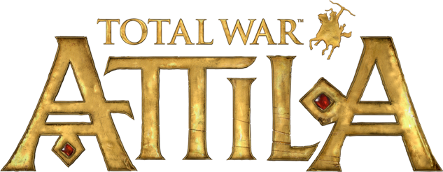Review - Total War: Attila
by
Published on November 08, 2015 05:05 PM
Sort - Number of Views: 9467
Following the most recent releases of TW series, it's with great pride that the Eagle Standard is offering you today a full review of Attila: Total War, as it has been interpreted by Lugotorix. The game itself has been launched for it's February release, and as the fifth DLC on it's way, we'd like to take some time to update our readers with an overview of the game and its features.
Review - Total War:Attila
A word from Q:
Originally Posted by Omnipotent-Q
I had a chance to play a battle today and see the announcement. The battle was a defense of London(ium) as WRE against the Saxon horde. I lost the battle by a whisker but I was outnumbered three to one (Of course I played it like a genius, I just got unlucky). The changes they've made in regards to sieges are impressive. Barricades, siege towers, damage from sieges passing to the campaign map and vice versa. So for example attrition because of siege can cause mass fires in the settlement, there can be gaps in the wall, disease is more of a factor and can run rampant in armies and settlements.
Some settlements have civilians in depending on the situation. Compared to sieges on Rome II it's miles ahead because of the sheer number of positive improvements. The siege battle of London I played was gritty, it's the most challenging siege I've played in a Total War game full stop and to sum it up it was excellent. Campaign map improvements are just as big. A return for the family tree along with assigning of related people to political office (giving them skills and so forth). Edicts can only be issued in Attila if there's a governor assigned to the province - from the new family tree setup they've got. Such a governor appears in the province - he can be a general or in the garrison of the provinces main city. Tech all on one screen not several screens is just one example of the big UI improvements I saw in their campaign demonstration. You can zoom in and out to a better degree than Rome II and you can see the changes in climate a lot more. So for example they panned too North Africa which was clearly hot, and in Britain it was obviously gloomy and raining. This sounds like me saying "the campaign map has weather" but that would be too simplistic - they've clearly thought about it a lot more and it's better seen than described. Geography and choke points seem to take on a greater emphasis - something anyone playing as WRE is going to have to use.
Another cool feature in the announcement they showed off was the ability to abandon settlements in a sort of scorched Earth policy - particularly useful when you're say WRE and you don't have the troop numbers to handle the hordes of barbarian unwashed that outnumber you. The pale of scorched earth destruction from hitting the abandon settlement button is something I'd never have expected to see in a Total War game. So the example that was given was the Saxon invasion of England, whereby they demonstrated abandoning a northern British city (Ebracorum) leaving it as a wasteland with little economic value to be gained by taking it. I mean you don't want to hand a nice Roman city with its riches intact ready to be stolen after all. Which of course allowed the Roman army greatly outnumbered by Saxons to retreat south to the more defensible Londonium.
They also touched on their plans re: sharing people's campaigns online, filtering events and so forth of which was mentioned earlier in this thread. Does sound cool and would make for some great TW discussion about campaigns.
For what was billed as an alpha, it was extremely good and showed a lot of promise. I don't say that lightly either. CA has taken criticism for some aspects of Rome II - some of the criticisms were fair, some of them unfair. I got the impression from what I've seen today and played today that they're answering such criticisms with a very impressive, vastly improved, Total War title. I think as a game it will be a big hit.
CONCERNING CHARACTERS
Repeated attempts to entrust this man have failed, resulting in my faction leader suffering from measles, powerless, on Corsica, with no influence to spare. Instead he turns to the widow of a man he once adopted into the royal house, to make Filimer an offer he can't refuse. As you may see, one of the heirs of Honorius has started a civil war, and the Eucherius figure, son of Stilicho is my current faction leader, noble houses emerge from war and infighting for a family tree with complex relationships.
Here's a screenshot of the infamous character Attila in action against my Ostrogoth armies led by my faction heir. This game forces you to put vital parts of your faction on the fore-front. Attila, the Scourge of God, in battle
THE BATTLES and AI
http://www.twcenter.net/forums/conte...a-split-review 


 Sections of TWC
Sections of TWC Article Categories
Article Categories





vBulletin Message